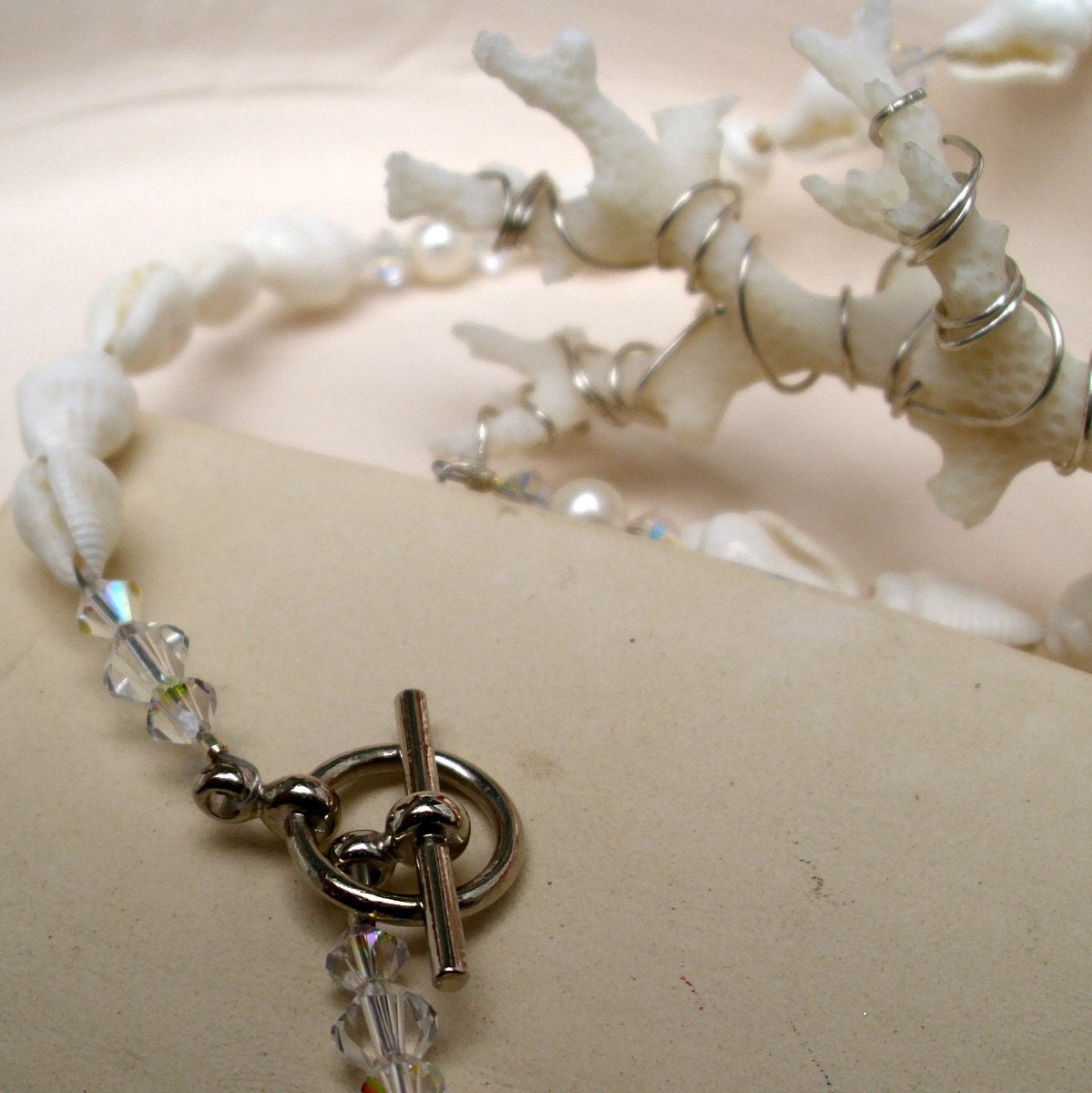The thing about it is ... well, yes, coral is a living thing, but that also means coral dies. And the exoskeletons aren't food for anything that I know of. Basically, once a coral dies, it becomes proto-sand.
The coral I use in my jewelry designs was sold to me as "responsibly collected." And I do believe firmly in the responsibility to source one's materials, especially in jewelry design -- we need to know our diamonds are conflict-free (link is disturbing), we need to know if we're selling Swarovski crystal jewelry or a Chinese imitation that will fade to grey-brown before the bridesmaids wear their bracelets -- but there's also a limit to what is possible. And honestly, I'm willing to accept that the grab bags of broken coral pieces from which I get my branches are pre-deceased coral, that it's found on a beach and not cut from a reef. I can't follow the shop owner around stalking her to see if she does any snorkeling. I can only note whether she's offering whole ocean corals next to my grab bags of broken pieces, and make an educated guess about her suppliers' collection practices from there.
So when I say that my coral is "responsibly collected," that's what I mean: "To the best of my reasonable knowledge, this is coral that was not poached or killed to be sold."

Available here.
That makes it sound a little creepy, doesn't it? But honestly, all the ocean-sourced materials -- shells, coral, starfish, everything but pearls -- are the exoskeletons of marine creatures. It doesn't necessarily have to be alarming, unless we're also finding bone, horn and leather alarming. Let it be stated: The coral and shell jewelry isn't vegan.
So why did I make this post when it makes my jewelry sound mildly creepy? Well, I wanted to join the conversation about coral -- and I like it when customers ask me about my sources. It makes me respect them a little more if they're concerned and it allows me to talk more about my favorite thing: beads and found objects.
Also, I alluded to it in the first part of my article series about writing descriptions to sell handmade products, so I thought if the question was going to arise in such a timely manner I'd better clarify here.
Now, having read the Etsy Storque article, there's another thing -- all those pink and red coral beads that are so readily available. I guess I've always assumed that coral was farmed somewhere, like pearls, but according to that article, it can't be. So while I'm not going to toss my small current supply, once I've used it up, I'll be trying some alternatives like ceramic or mountain jade to get that effect.
tl;dr: My coral is responsibly collected to the best of my knowledge and I'm going to stop purchasing any I'm unsure of.
No comments:
Post a Comment